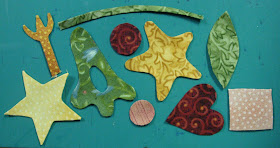I am shocked and humbled that "All Around the Town" (pattern by Sue Garmon) took Best of Show Wall Hanging. Here it is, hanging on point, at the show. I will get some better pictures tomorrow when the show is not so crowded...I want to get one that is oriented "right side up" so that it looks square again, also some close ups. Some of you know what I went through to get it square, LOL!!
My "Wickedly Liberated" took a second place ribbon in the Bed Quilts: Large Pieced-Machine Quilted category. It was custom machine quilted by Marilyn Lange of Ypsilanti, Michigan, a friend in my stitch group. Again, hard to photograph on a busy day...I will do better tomorrow, I hope. It is about 93 inches square, so it is hard to photograph when you can not back up enough! (And definitely hard to photograph in my little house). It took two pictures at the show to be able to read the borders!
This free-pieced adventure was the result of a liberated lady block swap in my Friday morning Sit and Stitch group. My friend Mary J made witches, so I knew I had to come up with a quilt that incorporated my daughter's love of "Wicked" and "The Wizard of Oz." I came up with some free-pieced doggies, a few trees, a witch hat, and a house fallen on a witch to round out the theme. Then I tried Tonya's free-pieced letters in the border (Lazy Gal Quilting).
My friend, Cheryl G (no blog) took two first place ribbons. The first one was for "Labor of Love/Double Wedding Ring" in the Bed Quilts: Pieced-Hand Quilted category. She made this for her daughter as a wedding gift.
And the border...
Here is the back, where she used a train to display some additional information about the life of hobo's.
This is Mary's third quilt, which took a second prize ribbon in the Bed Quilts: Appliqued-Machine Quilted category. It is called "Tidings," a design by Nancy Halvorsen. It is custom machine quilted by Marilyn Lange of Ypsilanti, Michigan.
A couple of the blocks...she does really nice raw edge applique with machine blanket stitch...
My friend Margit McPhee took a second place ribbon in the Bed Quilts: Small Pieced-Machine Quilted category with "Buggy Barn Baskets." This was custom machine quilted by Marilyn Lange as well.
I have so many more pictures to share with you! Stay tuned for LOTS more eye candy in my next few posts.
In stitches,
Teresa :o)





















































































































